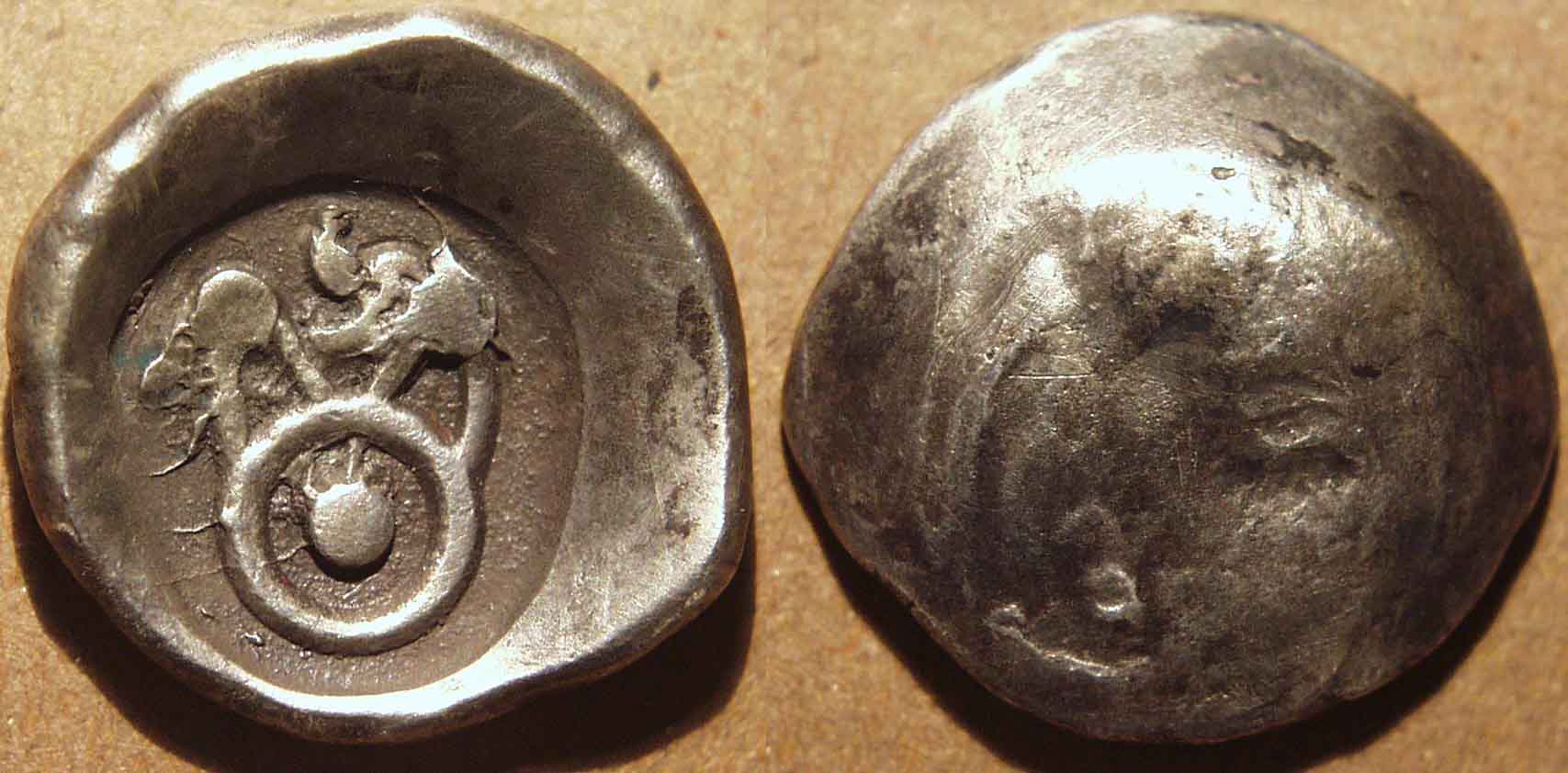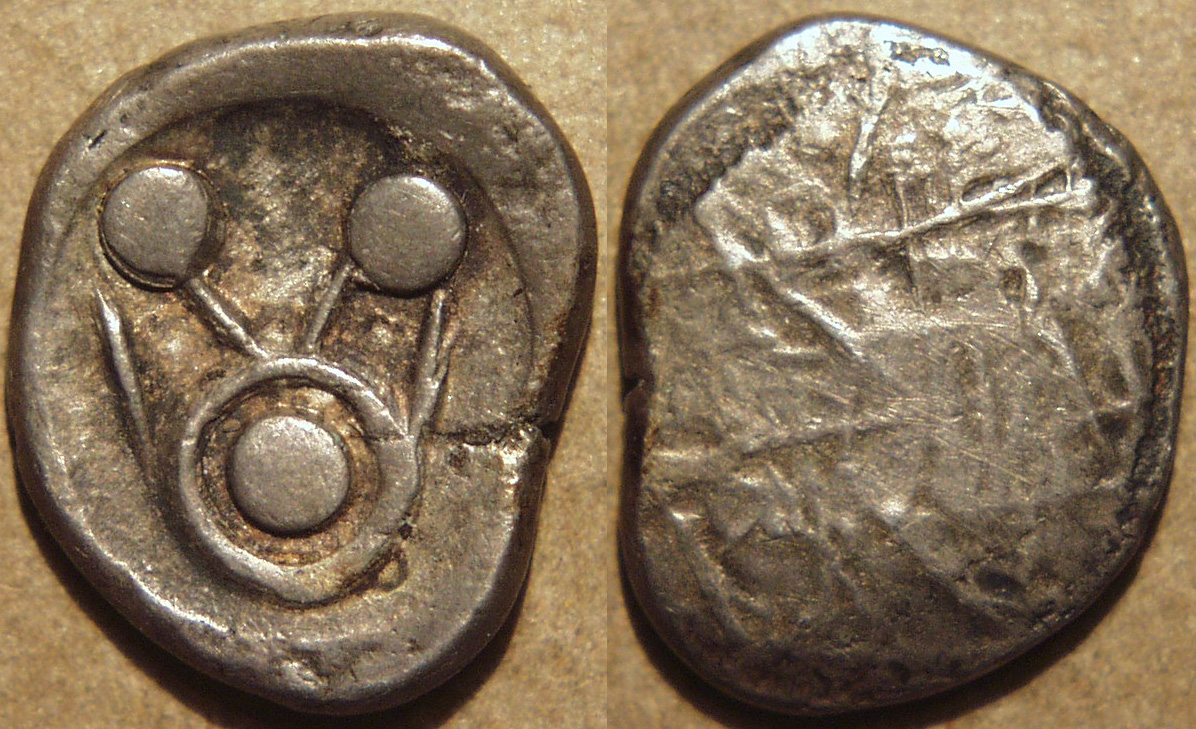|
The Kuntala janapada was located in southern Maharashtra and northern Karnataka state. The usual coin from Kuntala has a mysterious design that resembles a
system of pulleys. These coins have previously been assigned to the Ashmaka janapada, but are now assigned to Kuntala.
Because of the force of the striking of the die on a round planchet, these coins have a scyphate shape. This is very interesting, because it tells us why, though most of
history, coin dies were made bigger than the flans. Indian coins often (almost always!) have portions of the design that are off the flan. These coins explain why. If the dies had
been made to completely cover just the flan, the coins would have ended up having curly edges on at least part of the edge, because it would have been well-nigh impossible
to keep the die exactly over the flan.
|

|
Silver 1/2 shatamana
c. 600-450 BCE
Weight:6.80 gm., Diam:21 mm.
"Pulley" design, triskele above /
blank
Ref: Rajgor, 502-509. |

|
Silver 1/2 shatamana
c. 600-450 BCE
Weight:6.75 gm., Diam:21 mm.
"Pulley" design, triskele above /
blank
Ref: Rajgor, 502-509. |

|
Silver 3-shana or karshapana ?
c. 600-450 BCE
Weight:3.49 gm., Diam: 13-17 mm.
"Pulley" design /
blank
Ref: Rajgor, 515-517. |
|